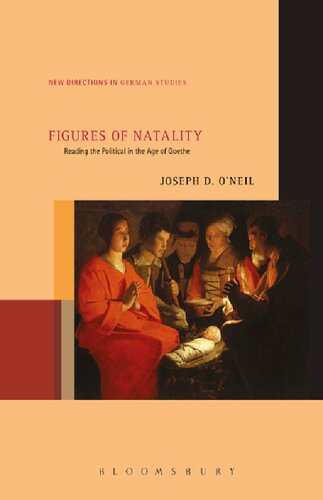

Most ebook files are in PDF format, so you can easily read them using various software such as Foxit Reader or directly on the Google Chrome browser.
Some ebook files are released by publishers in other formats such as .awz, .mobi, .epub, .fb2, etc. You may need to install specific software to read these formats on mobile/PC, such as Calibre.
Please read the tutorial at this link. https://ebooknice.com/page/post?id=faq
We offer FREE conversion to the popular formats you request; however, this may take some time. Therefore, right after payment, please email us, and we will try to provide the service as quickly as possible.
For some exceptional file formats or broken links (if any), please refrain from opening any disputes. Instead, email us first, and we will try to assist within a maximum of 6 hours.
EbookNice Team

Status:
Available0.0
0 reviewsFigures of Natality reads metaphors and narratives of birth in the age of Goethe (1770-1832) as indicators of the new, the unexpected, and the revolutionary. Using Hannah Arendt's concept of natality, Joseph O'Neil argues that Lessing, Goethe, and Kleist see birth as challenging paradigms of Romanticism as well as of Enlightenment, resisting the assimilation of the political to economics, science, or morality. They choose instead to preserve the conflicts and tensions at the heart of social, political, and poetic revolutions. In a historical reading, these tensions evolve from the idea of revolution as Arendt reads it in British North America to the social and economic questions that shape the French Revolution, culminating in a consideration of the culture of the modern republic as such.
Alongside this geopolitical evolution, the ways of representing the political change, too, moving from the new as revolutionary eruption to economic metaphors of birth. More pressing still is the question of revolutionary subjectivity and political agency, and Lessing, Goethe, and Kleist have an answer that is remarkably close to that of Walter Benjamin, as that “secret index” through which each past age is “pointed toward redemption.” Figures of Natality uncovers this index at the heart of scenes and products of birth in the age of Goethe.